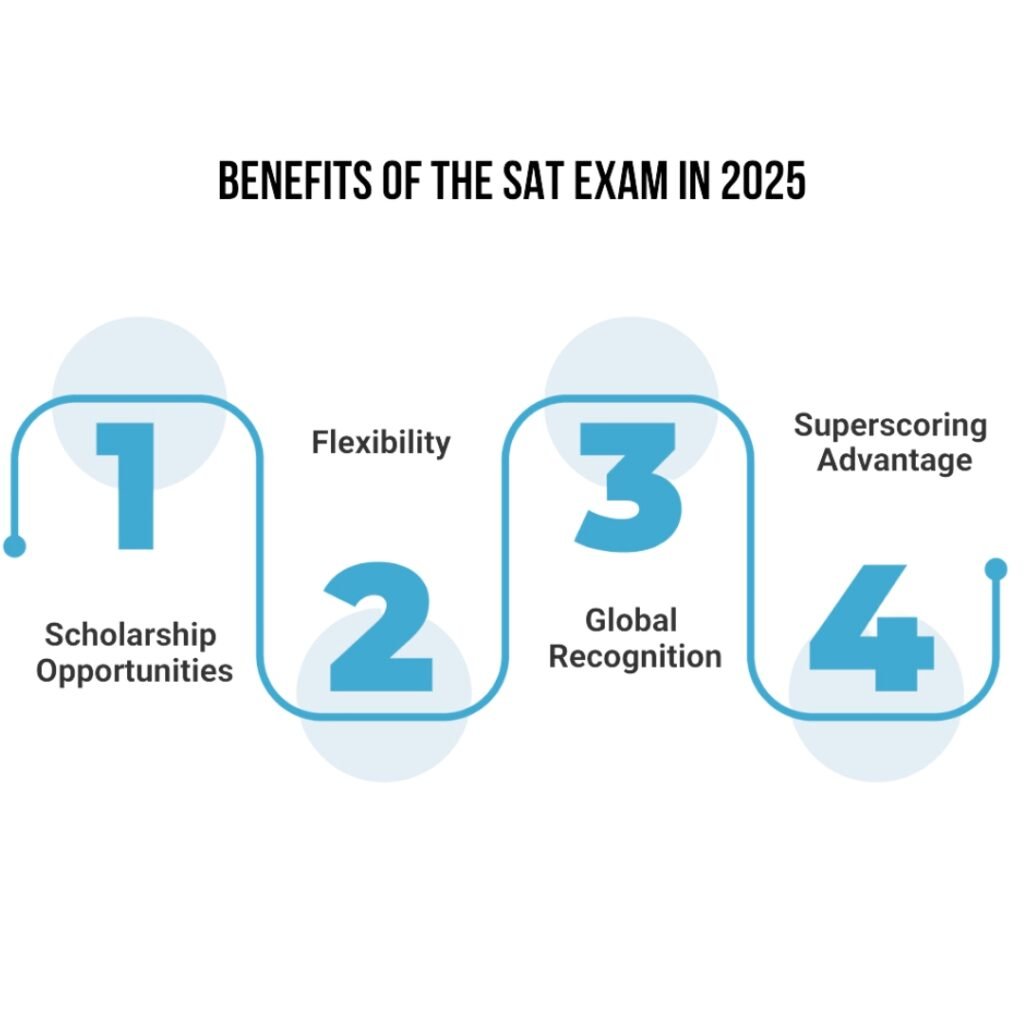
Telangana.India
Send an e-mail
Call Us Now

The SAT (Scholastic Assessment Test) is a standardized exam for students aspiring to pursue undergraduate studies abroad, recognized by over 800 universities worldwide, including in the USA, UK, Germany, Australia, and Canada. Administered by the College Board, it evaluates literacy, numeracy, and writing skills critical for academic success.
SAT scores play a pivotal role in college admissions and scholarships, particularly for top-tier universities. It is a pencil-and-paper test, typically taken after high school graduation, and proper preparation increases the chances of achieving higher scores.
In countries like the USA and Canada, many institutions require SAT scores for undergraduate applications. Additionally, Indian students can secure scholarships based on SAT results, and some companies may consider SAT scores during job applications.
The SAT score scale ranges from 400 to 1600, with individual section scores varying from 200 to 800.
It is important to review your scores on the College Board platform before sending them to colleges or universities.
If you are dissatisfied with your SAT results, you have the option to request “score verification.”
Alternatively, you can choose “score cancellation” to prevent your scores from being sent to the selected institutions.
Financial constraints can hinder talented students from continuing their education, potentially interrupting their academic journeys.
SAT scholarships provide a crucial opportunity for economically disadvantaged students to overcome financial barriers and achieve their aspirations of studying abroad.
By applying for these scholarships, students can access support that helps them secure admission to their dream universities and pursue their academic goals despite financial challenges.
The SAT is transitioning to a digital format, which will be implemented in the near future. This change aims to enhance the testing experience by allowing for a more streamlined and efficient assessment process. The digital SAT will feature a shorter testing duration and adaptive question formats, adjusting the difficulty of questions based on student responses. This format is designed to reduce test anxiety and provide a more user-friendly experience. Additionally, the digital SAT will maintain the same content areas as the traditional format, ensuring that it continues to assess students’ readiness for college-level work.
It depends. Many U.S. colleges still consider SAT scores alongside other factors. However, some institutions have become test-optional or even test-blind, focusing more on GPA, activities, and essays. Check your target universities’ specific requirements.
There’s no definitive answer. Both tests measure similar skills, but they have different formats and content emphasis. Choose the one that feels more comfortable and aligns with your strengths.
The registration fee ranges from US$60 to US$108, depending on location and optional essay selection. Fee waivers are available for students with financial hardship.
The SAT is offered multiple times per year at designated test centers worldwide. You can register online and choose a convenient date and location.
The SAT has three main sections: Reading, Writing & Language, and Math. Additionally, an optional essay section is available. Each section is scored on a scale of 200-800, contributing to a total score between 400 and 1600.
Official resources like the College Board website, practice tests, and study guides are excellent starting points. Many prep courses, online resources, and even mobile apps offer additional practice and strategies.
Identify your weaknesses through diagnostic tests and practice questions. Focus on targeted drills and strategies for areas needing improvement. Online forums and tutoring can also provide specific help.
Results are typically released within 4-6 weeks after your test date. You can access them online through your College Board account.
Yes, you can retake the SAT as many times as you want. However, there are limitations and score reporting options to consider. Remember, consistent preparation and improvement are key.
Don’t get overwhelmed! The SAT is just one factor in your college application. Focus on developing strong academic skills, exploring your interests, and crafting a compelling application that showcases your unique talents and achievements.
Munu International stands out as a prominent consultancy specializing in global education, committed to guiding Indian students in realizing their academic ambitions on the international front. Our resolute dedication to excellence and an enduring enthusiasm for education have established us as a reliable partner in helping students pursue their overseas study dreams.
Flat no:101, First Floor, Ameer Estate,
beside S.R. Nagar Bus stop, Ameerpet, Hyderabad-500038
Opp.Metro Pillar -1038
Copyright © 2023, All Rights Reserved By Munu International | Powered by Sky High Digitals